‘Halloween Ends’: Reviewed, Explained, and Analyzed
Halloween Ends promises and delivers an ending to director David Gordon Green’s Halloween movies. The ending we received isn’t what many people expected or wanted though. Here’s why.

Halloween Ends is a difficult movie. It’s difficult to classify, and its merits can be difficult to articulate. As the finale of director David Gordon Green’s trilogy of Halloween movies, it’s a logical conclusion. But as the “end” of the Halloween franchise, it fails in different ways. If a movie can be both good and bad at the same time, Halloween Ends is that movie.

The immediate reaction to Halloween Ends upon release was, as expected, divisive. After more than four decades of living in a world where Michael Myers and Laurie Strode exist, people have lots of ideas about how their story should end. Possibly the best result of Halloween Ends is that it prompted widespread discussion. The movie forces people to think about what the Halloween series means to them.
Are the Halloween movies about the killer? Are they about the survivors? Or are they about the more intangible concepts of fear and evil? Everyone has their own ideas. This article is meant to help make sense of some of those ideas by thoroughly reviewing, explaining, and analyzing Halloween Ends. The review section contains only minor spoilers needed to give an idea about the basic plot, but beware of major spoilers in the rest of the article.
Spoiler-Free Review
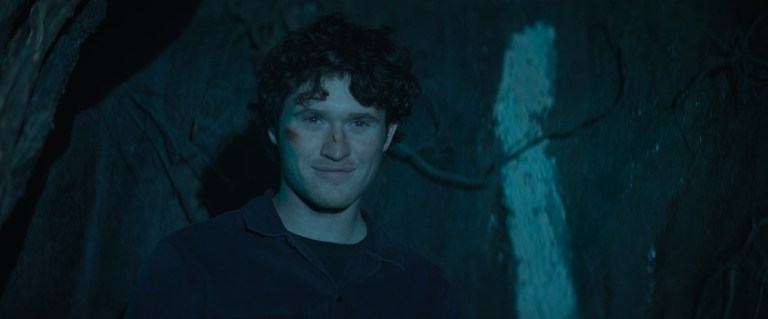
David Gordon Green’s trilogy that began with Halloween (2018) and continued in Halloween Kills (2021) repeatedly challenges expectations. Green’s version of the Halloween story removes all of the baggage caused by the numerous sequels released since 1981, and, up until Halloween Ends, it focuses heavily on John Carpenter and Debra Hill’s original idea that Michael Myers is an unknowable force. A literal boogeyman. Green’s movies also focus heavily on the effects of fear and trauma. Halloween Ends attempts to bring these themes to a satisfying conclusion while still delivering slasher action as well as a “final battle” between Laurie and Michael, but in doing so may have split the focus of the story too much to please most people.
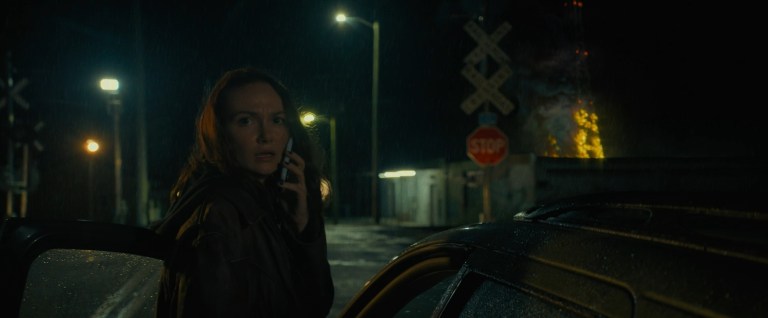
That’s not to say Halloween Ends is a bad movie. It does a lot of things well. For starters, the idea of the infectious nature of “evil” that was at the forefront of Halloween Kills is taken to the next logical step. Four years after the events of Halloween in 2018, many of the townsfolk in Haddonfield still feel the effects of that night. Michael hasn’t been seen since then, and the town’s lingering fear has taken the shape of anger. People are looking for a new boogeyman to lay their fears on, and many of them find a target in Corey Cunningham (Rohan Campbell). So in effect, the evil that caused Haddonfield to unite in Halloween Kills is now tearing the town apart from the inside, possibly creating a new boogeyman in the process. It’s a good and powerful idea.
In a departure from every film in this particular Halloween timeline, the opening segment of Halloween Ends begins not with Michael Myers, but with the new character of Corey. Avoiding spoilers, Corey is involved in an incident that leads people to treat him as a pariah. Much of the movie is then about Corey’s journey which intersects with Laurie (Jamie Lee Curtis) and Allyson (Andi Matichak) as they also try to figure out their places in the world.

The best part of Halloween Ends may be the performances from the three lead actors. Jamie Lee Curtis, Andi Matichak, and Rohan Campbell all do a great job with what they’re given even if many of the character decisions are odd. Jamie Lee Curtis in particular is at her most endearing in the current trilogy, playing Laurie as a mixture of her idealistic, hair-twirling 17-year-old self, a sad and vulnerable recovering victim, and a more matured version of her Sarah-Connor-esque badass character. After being wrong about so many things in this trilogy, Laurie finally starts to figure her life out by the end, and Jamie Lee Curtis sells it all wonderfully.
Halloween Ends should also be praised for trying something different. Halloween is a slasher franchise, but Halloween Ends is only partly a slasher movie. More than that, it is a drama about people trying to figure out how to move on with their lives when they are constantly being reminded of the past by the people around them. The slasher portion of the movie all happens in the second half, and by that point a lot of it feels underdeveloped.
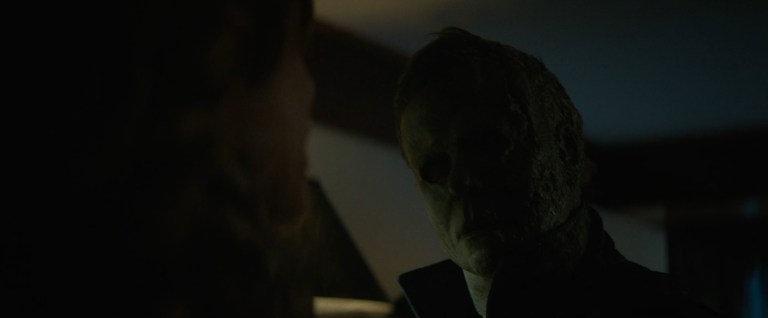
Heading into Halloween Ends, most people probably expected Laurie and Michael to be the main focus. That’s what the trailers led us to believe. However, people expecting a bigger, wilder rehash of their battle at the end of Halloween (2018) will be severely disappointed. Halloween Ends does deliver on its promise of a definitive ending, but it does so in an abbreviated way that feels contrived. And that’s one of the main issues in the entire movie: for all the good ideas it presents, few of them are executed as well as they could have been.
David Gordon Green has talked about his love of 80’s movies and “midnight movie madness,” but his attempt to meld slasher fun with a psychological drama ends up feeling like he never truly commits to either style. A movie like Ti West’s X (2022) proves that a slasher film can be emotional, thoughtful, and fun at the same time, but Halloween Ends struggles to deliver in that sense. Of course, X didn’t have the same history to contend with that a Halloween movie does, but still, Halloween Ends feels like it wants to be a different movie. A new beginning rather than a climactic ending. So instead, it’s both, and neither idea is able to fully develop.

Halloween Ends also feels heavy-handed with the delivery of its themes. Laurie literally spells it all out for viewers multiple times as she narrates while writing her memoirs at different times throughout the movie. While largely a personal preference, if you have to spoon-feed your audience that much, the story probably isn’t as deep or clever as it’s made out to be.
So, when the final credits roll for the last time on this incarnation of Michael, Laurie, and the rest of Haddonfield, viewers will likely have mixed feelings. For the most part, Halloween Ends is a fine movie about the effects of evil, but it’s not a great movie as the end of an era for the Halloween franchise. Stopping at Halloween (2018) or Halloween Kills would deliver a more satisfying conclusion to this version of the Halloween story. Halloween Ends is a good example of how not every movie series needs to be told as a trilogy.
Explanation & Analysis
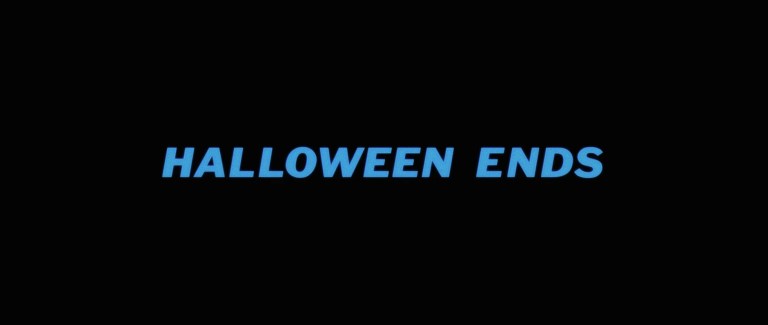
The main idea of Halloween Ends (and, by extension, of David Gordon Green’s entire trilogy) is that of evil taking many different shapes. Laurie says pretty much these exact words towards the end of the movie, summarizing the theme in case anyone missed it. The theme is illustrated in Halloween Ends mainly by the story of Corey Cunningham.
Warning: Major spoilers ahead.

In the pre-opening-credits sequence, we see an innocent-looking Corey babysitting an obnoxious kid named Jeremy in 2019. Jeremy decides to play a trick on Corey by hiding and then locking Corey in an upstairs room. With rising fear inspired by the Halloween massacre just a year earlier, Corey kicks the door open, accidentally knocking Jeremy over a bannister and down to the floor, killing him. Jumping forward to 2022, Corey didn’t go to prison, but many people in town consider him to be a child-killer.
Narration by Laurie informs us that the people of Haddonfield have been dealing with the fallout of Michael’s massacre and subsequent disappearance in extremely negative ways. Violent crime and suicides have risen, and people are generally quicker to harshly judge people as an outlet for their own fear. Corey’s situation makes him a prime target, and he is treated unfairly by nearly everyone. Laurie recognizes Corey’s plight because she is treated similarly for what people perceive to be her role in Michael’s attacks. Laurie tries to help Corey, but her help makes things worse by escalating the verbal and physical attacks directed at him.

Eventually, while being attacked by a group of aggressive high-school students, Corey is thrown over a bridge and left for dead. His body is dragged into a sewer where, about forty minutes into the movie, we finally see Michael Myers for the first time. Michael looks into Corey’s eyes, sees the evil inside, and lets him go. Corey is then metaphorically reborn, his exit through the sewer tunnel representing the journey through the birth canal. Once outside, Corey makes his first intentional kill, and, finding that he can get away with murder, continues down that path.
So, in effect, the lingering effects of Michael Myers contributed to Corey’s accidental killing of a child, and Michael also indirectly contributed to the continued wearing down of Corey’s mental state. Michael Myers has always been referred to as The Shape, and Corey Cunningham is a new, emerging shape for the evil that resides in Haddonfield. While this is a perfectly good and logical next step after Halloween Kills, the execution is a misstep for a Halloween movie. It’s understandable that not everyone is happy with it.
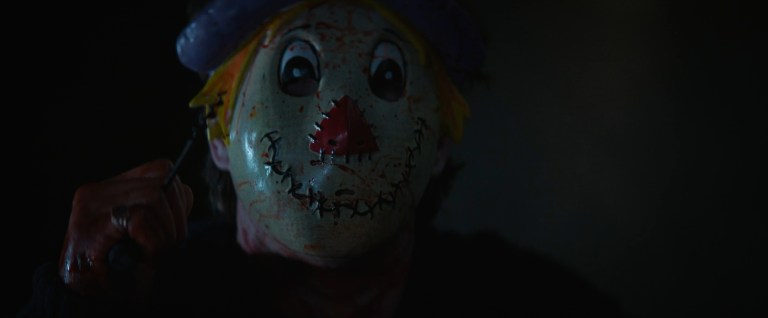
For one thing, the above description is very light on Laurie and Michael’s direct contributions. That’s because, for the most part, Halloween Ends is Corey’s story. It’s a familiar tale of the making of a serial killer. Many recognizable serial killer tropes are there: a harsh and overbearing mother, being pushed over the edge by escalating harassment, and the feeling that no one understands him. It’s not bad, it’s just not something that feels totally original. It also misses the point of what Michael Myers is portrayed as.
Corey kills for revenge. His murder spree is focused on the people he thinks did him wrong (or who did wrong to Allyson). Corey also begins to enjoy murder. Michael Myers is emotionless, and he kills people seemingly at random. In the 1978 movie there is some sort of connection to his sister Judith, but even then his motivations are left murky at best. Otherwise, he mostly just kills the people he comes across, occasionally fixing his attention a specific person. So, while Corey may make sense as a killer, having him as the main killer in a Halloween movie makes it feel like it isn’t a Halloween movie.

A solution to this problem could have been to focus more on Allyson rather than on Corey. As it is, Allyson’s role in Halloween Ends feels like a few steps backward for her. She falls in love with Corey presumably because she feels a connection to his pain, but her role is so limited that her motivations remain unclear through most of the movie. Is she trying to help Corey reintegrate into society like she mentions after their first date, or is she really attracted to him? Both, probably, but that isn’t clear for a good long while. Regardless, focusing on Allyson would have been a welcome continuation of her story from the previous two movies, and it would have let Corey’s motivations remain more mysterious. Of all the returning characters, Allyson feels most like she’s just there to act as a plot device for the other characters.

Speaking of the returning characters, one of the major complaints people have is the limited time given to Laurie and Michael in a movie that was marketed as being all about them. Laurie does in fact play a large role in Halloween Ends, even if her actual screen time is less than Corey’s. Laurie’s role is closely tied to Corey’s journey, and her character arc is possibly the biggest in the movie. Laurie begins in a role that seems like maybe she’s trying to be happy and “normal” for Allyson’s sake, but in reality she’s still struggling. Basically, Laurie is going through the motions, but her stability is easily broken by a few harsh words from others. Her being part of Corey’s downfall helps bring back the fighter that she is, giving her balance by the time the credits roll, regardless of whether we like the choices made for her character.
Michael, on the other hand, does feel absent most of the time. Some will argue that Michael is present every time there’s a negative thought or a violent action in Haddonfield. That sounds nice and it was probably the intention, but it doesn’t mean it’s effective. Similar to how in Halloween Kills Tommy accuses everyone in Mick’s Bar of forgetting or not caring about Michael, plenty of people in Halloween Ends don’t seem affected much. They all remember, but the local radio host makes a joke out of Michael. The high-school bullies openly mock Laurie about Michael. And none of them are afraid to go out at night. Some people may still be affected, but others are moving on.

Instead, Michael shows up about halfway through the movie and takes on a lesser role. Whether Corey can be described as his disciple or not, Michael absolutely serves in a supporting role for most of the movie. It’s a huge difference from the 1978 movie where Michael is in the first and final scenes, and he is shown to be present in almost every scene whether we can see him or not. Even David Gordon Green understood that hiding Michael so much was a risk, telling Collider in an interview that “we’re asking a lot” of the audience.
In fact, having Michael in a limited role is the point. By this time in David Gordon Green’s trilogy, the focus isn’t on Michael anymore, it’s on evil. Michael may still represent evil to a degree, but it’s bigger than him now. Halloween Kills does a good job of reestablishing Michael as something more than a man. He is the boogeyman. The final sequence of stylized violence in Kills shows Michael rising from what looks like death and murdering Tommy’s mob before appearing back in his former home. That echoes the finale of Halloween (1978) when Michael disappears after being shot and we hear his breathing while we look at the Myers house. Halloween Ends backtracks, portraying Michael as an old man who never fully recovered from his injuries four years prior.

David Gordon Green’s trilogy ends by making Michael Myers not a boogeyman, but just a man. An extraordinarily powerful and durable man whose true nature is unknowable, but still a flesh-and-blood man who can be killed with a knife if you know where to cut. Yes, Laurie and Allyson crush Michael’s body to pieces in the end as a symbolic act to help ease Haddonfield’s collective trauma, but there is never a moment when he rises up in a stereotypical slasher style after his throat and wrist are slashed. The best he can do is reach for Laurie’s throat as he bleeds out and drowns in his own blood. Making Michael “just a man in a Halloween mask” (as Corey refers to him) goes against the spirit of John Carpenter’s Halloween in which the director has referred to Michael as “part person, part supernatural force.”
Another interpretation is that Michael is supernatural in Halloween Ends. When he kills Doug Mulaney, Allyson’s ex-boyfriend, Michael’s body shudders and he appears to become slightly stronger. Is this a magical rejuvenation, or is it just adrenaline and the fact that Michael is actually moving around for the first time in a long time within his crypt-like sewer home? Does Michael actually pass evil into Corey, or does he just see the same intangible “evil” in his eyes that Laurie does? The supernatural aspect is left deliberately ambiguous, but giving Michael a definitive death lends credence to the idea that he is just a man. In fact, though David Gordon Green is often hesitant to comment on Michael’s true nature, he has said “I don’t think [Michael] does anything that’s supernatural. I just think he does things that are spectacular and resilient.”

With the boogeyman aspect gone, why even have a final battle? The ending of Halloween (2018) gave us a good fight between Laurie and Michael that reversed their roles from forty years before. Halloween Kills gave us a finale that left us feeling like Michael was evil incarnate. So for Halloween Ends, maybe Michael didn’t ever need to physically appear in the movie. If Michael’s appearances were all delusions in Corey’s head and the final battle with Laurie was only with Corey in Michael’s mask, the idea of infectious evil might have come across stronger. Lots of people wouldn’t have liked that either, but committing more fully to one idea would have made for a better movie (though, not a better Halloween movie).
As the movie is, Laurie dispatches Corey rather easily (which makes sense given her experiences), but Corey makes a weird sacrifice, killing himself in an attempt to frame Laurie and drive a wedge between her and Allyson. Corey’s final act feels superficial and pointless in the bigger picture, only serving as an excuse to get Allyson out of the house for a few minutes while Laurie and Michael have a brief fight in the kitchen. Corey’s death, the death of arguably this film’s main character, is used as a convenient plot device to facilitate a different story, which is the story most people expected to see: Michael versus Laurie.

Ideally, Corey’s story would have been slightly different and used as the beginning of a new cycle of Halloween movies. Changing the intent of the killer would be okay if that were the case. But just to be clear, it’s not that Halloween Ends doesn’t work as a completely satisfying ending to Michael and Laurie’s story just because it’s different. Fans of the Halloween franchise are used to plenty of different ideas thrown around in the series (some good, some not). Halloween Ends doesn’t work terribly well as a Halloween finale because it has too many ideas (some good, some not), and the ideas relevant for a good conclusion are pushed aside in an attempt to examine evil in a way that doesn’t mean much once both killers, both shapes, are dead. Both Halloween (2018) and Halloween Kills provide better stopping points for this timeline within the Halloween franchise.
